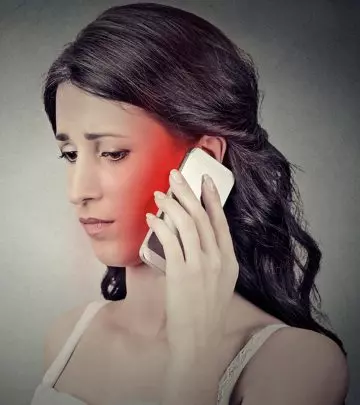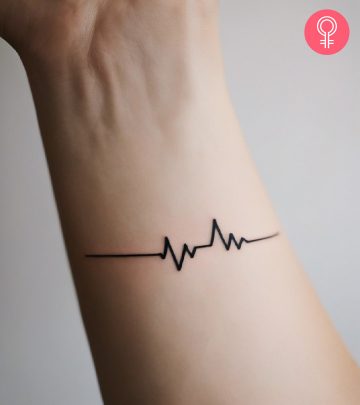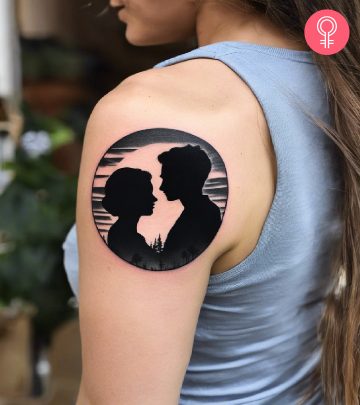Health Risks Of Using Cell Phones

Image: shutterstock
The most conspicuous human accessory today is the cellular phone. In fact, it is now more an extension of our arms than being just an accessory. Even the older generations seem to have adjusted to using one when just a few years ago they were convinced that it was meant only for emergencies.
The cellular phones also seem to be getting bigger in size. While not as boxy as the earliest generation, nowadays we have models, which are easily bigger than the size of an adult male’s palms but also sleeker and slimmer. The advertising gimmicks and year-around offers do not discourage us from buying new or trading in our old (some just six months old) phones for the most recent models.
However, at the same pace that newer phones seem to be hitting the markets, there are also reports studying the health concerns from the use of cell phones.
According to the National Cancer Institute in the US, the exposure to radiofrequency energy from the cell phones is considered by the public as one of the primary threats to human health. The radio-frequency is emitted from the antennae of cell phones, and it is reported that the tissues closest to the antennae may be absorbing this energy. Radiofrequency energy is one of the many forms of electromagnetic radiation, although as a nonionizing radiation it is relatively low frequency. However given the dramatic increase in the number of people using cell phones, and the ever increasing time spent on them, concerns are that people may be unnecessarily exposed to such energy.
What Are The Different Types Of Health Risks Associated With Cell Phones?
Cancer
While this is the most critical risk perceived, there is no scientific proof that the use of cell phones increases the risk of or causes cancer. One of the urgent impacts of radio frequency energy emitted by cell phones, however, is heat generation – resulting in tissues closest to the cell phone getting heated. But as radiofrequency energy has a very low frequency, there is no associated significant rise in temperature of the brain or the rest of the body.
Germs
This is a legitimate health risk. Our hands come into contact with several objects over the course of a day, and we are not always able to disinfect or wash our hands as much as we would like. As a result, our electronic devices – which are constantly in our hands whether we are close to a sanitizer or a wash basin or not – become a hotbed of germs. According to research, one in six cellular phones foster E. Coli bacteria, because their owners did not sanitize their hands appropriately after a visit to the toilet (1). When the body ingests E. Coli bacteria, it results in fever and vomiting. There is also another study that found that many cell phones are contaminated with Staphylococcus aureus (MRSA), bacteria that causes staph infections (2). Staph infections are painful and critical, sometimes even leading to amputation to save the person.
So ensure that your hands are always clean and that you disinfect or clean electronic devices with dedicated cleansing agents at least once a week.
Accidents
Cell phones are a leading source of distraction, and not just over conversation or at the dinner table. Nowadays, we see many men and women who confidently use their cell phones when driving. While they may think they are safe because nothing has happened so far, you cannot always predict what will happen. The distraction doesn’t just stem from the cell phone, what if there’s another driver who has lost his balance due to legitimate reasons and you are not able to control your vehicle in time? Using a cell phone is one of the many reasons why your brain may send delayed signals to respond appropriately and control your vehicle.
Cell phones were invented for emergencies, ensure that you don’t create one because of them.
Eyestrain
You are probably reading this article on your smartphone. Although phones are getting bigger, the screens are still small when you compare them with a TV or a laptop. Because of this, we often take our cell phones very close to our eyes to read them. The constant exposure to the bright light can cause a tremendous strain on our eyes. While you may not be able to avoid looking at your cell phone altogether, there are certain practices that can ease the strain on your eyes: check email on laptop, unless absolutely necessary; take a break from your phone for at least 5 minutes every hour; blink your eyes often; use a soothing eye drop at the end of the day.
The bright light and blinking for notifications also disrupt our sleep routines by promoting a false sense of being awake.
While many established institutions including the World Health Organisation have said that there is no scientific basis for at least the risk of cancer from cell phone usage, it is up to us users to be pragmatic enough to modify our habits to protect ourselves (3).



























